-
Getting there
-
I fly from Singapore to Doha on an eight-hour direct flight by Qatar Airways (www.qatarairways.com).
Tips
• Dress modestly. Both men and women should avoid sleeveless tops and shorts. Pants and dresses should end below the knee. Some places, such as the Museum of Islamic Art, require your legs to be fully covered. It has scarves on loan if you do not come prepared.
• Qatar has long, hot summers that range from 40 to 50 deg C. If you can, visit between December and April, when daytime temperatures usually hover around the mid-20s and nights are cool and windy.
• Either your right hand, or both hands, should be used to give and receive items such as tea, gifts or business cards. Avoid using only your left hand.
• Alcohol is not served in regular restaurants. However, most five-star hotels have alcohol licences and multiple bars.
Qatar, home away from home
Many foreigners flock to Doha, the capital, for work, adding colour to the booming city with their culture, crafts and chatter
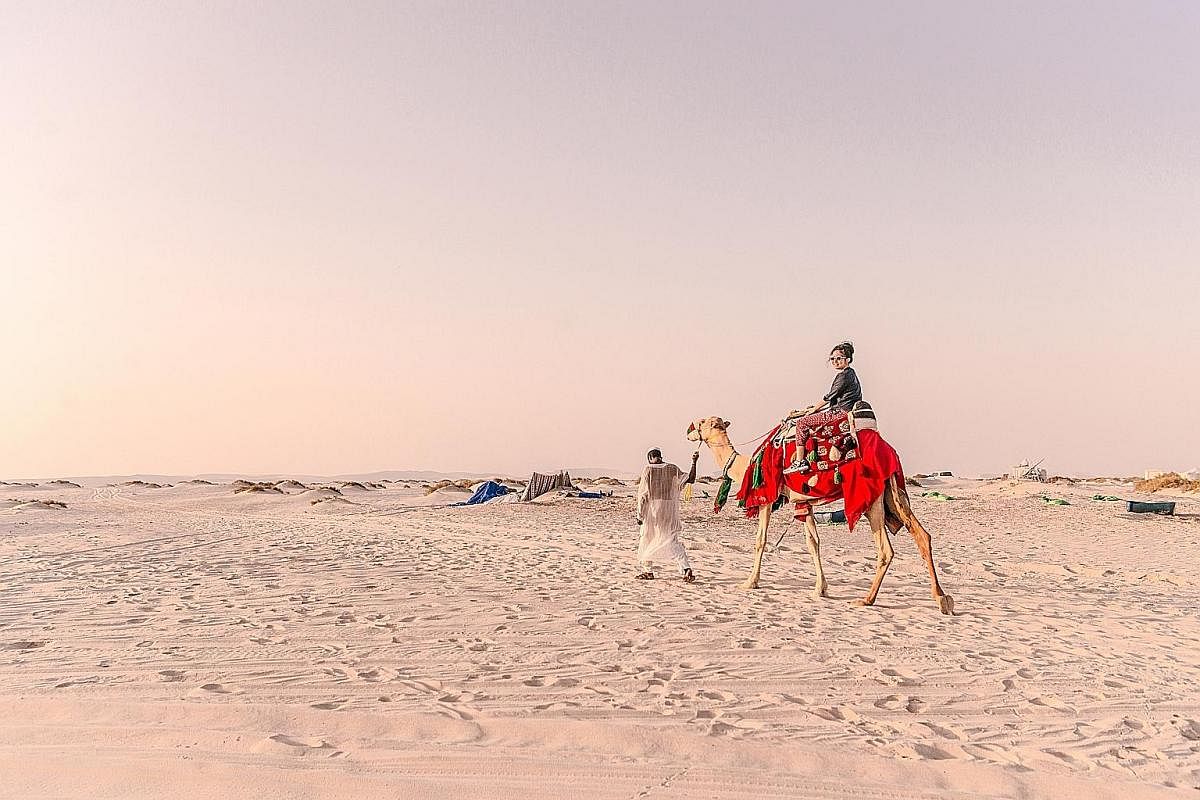
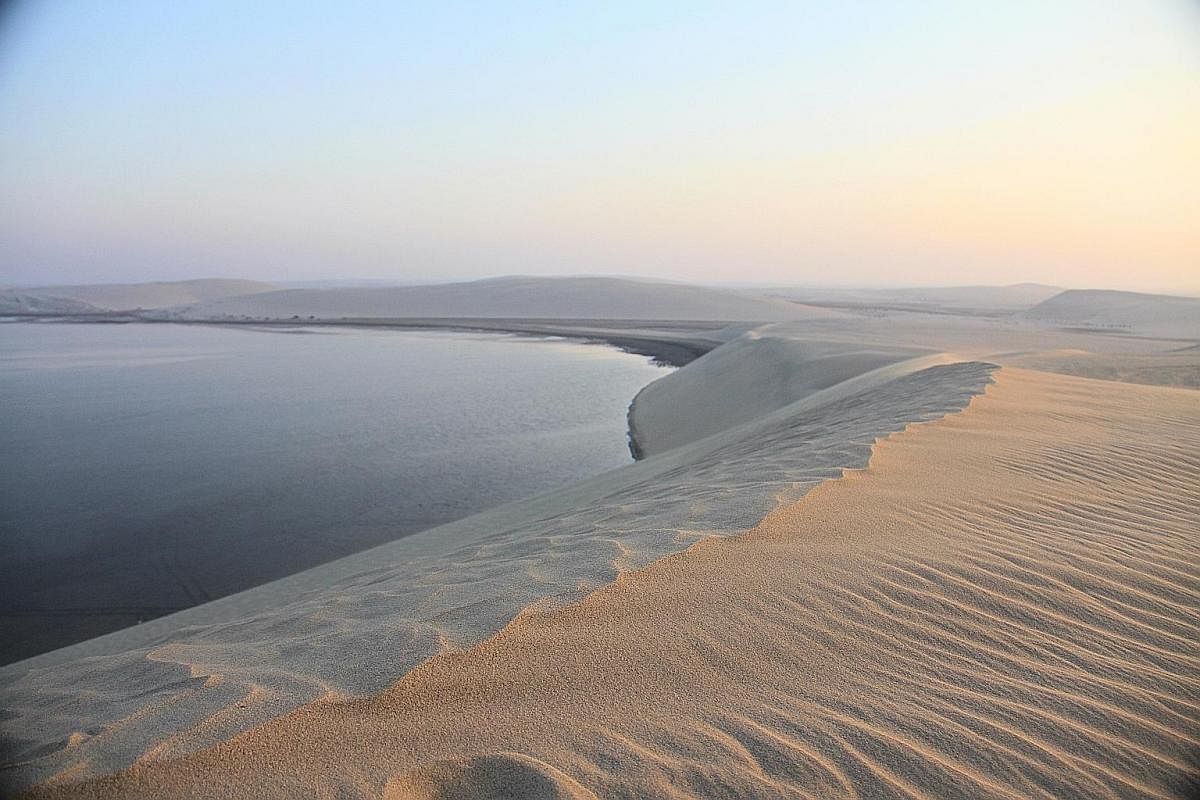
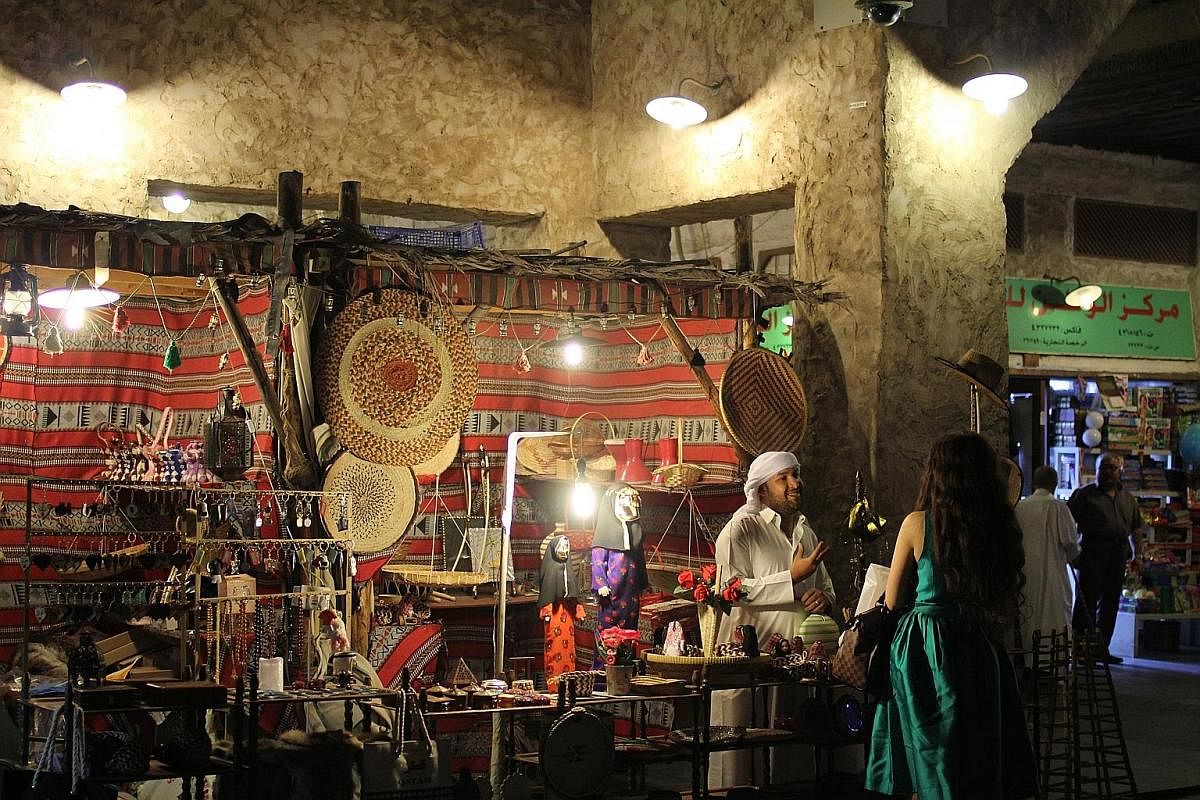
When I first meet communications manager Ashok Choudhary, I mistakenly assume he is Qatari.
When he finds out about this, he laughs. "Qataris don't work as tour guides," says Mr Choudhary, who is leading my five-day trip to the Qatari capital of Doha.
He is from Hyderabad, India, and has spent the last three years working in Qatar - first as a freelance journalist and then for cultural consultancy firm Embrace Doha.
He is among the 94 per cent of Qatar's workforce made up of foreigners, one of many cogs that keep the small Middle Eastern nation's oil economy, service and retail sectors, and burgeoning tourism industry going.
It is through their eyes that I understand this country, which is developing its stadiums and infrastructure ahead of hosting the 2022 Fifa World Cup.
Once the veil has been lifted, I spend the remainder of my tour noticing foreigners everywhere - their accents, their chatter and how they lend colour to their borrowed home.
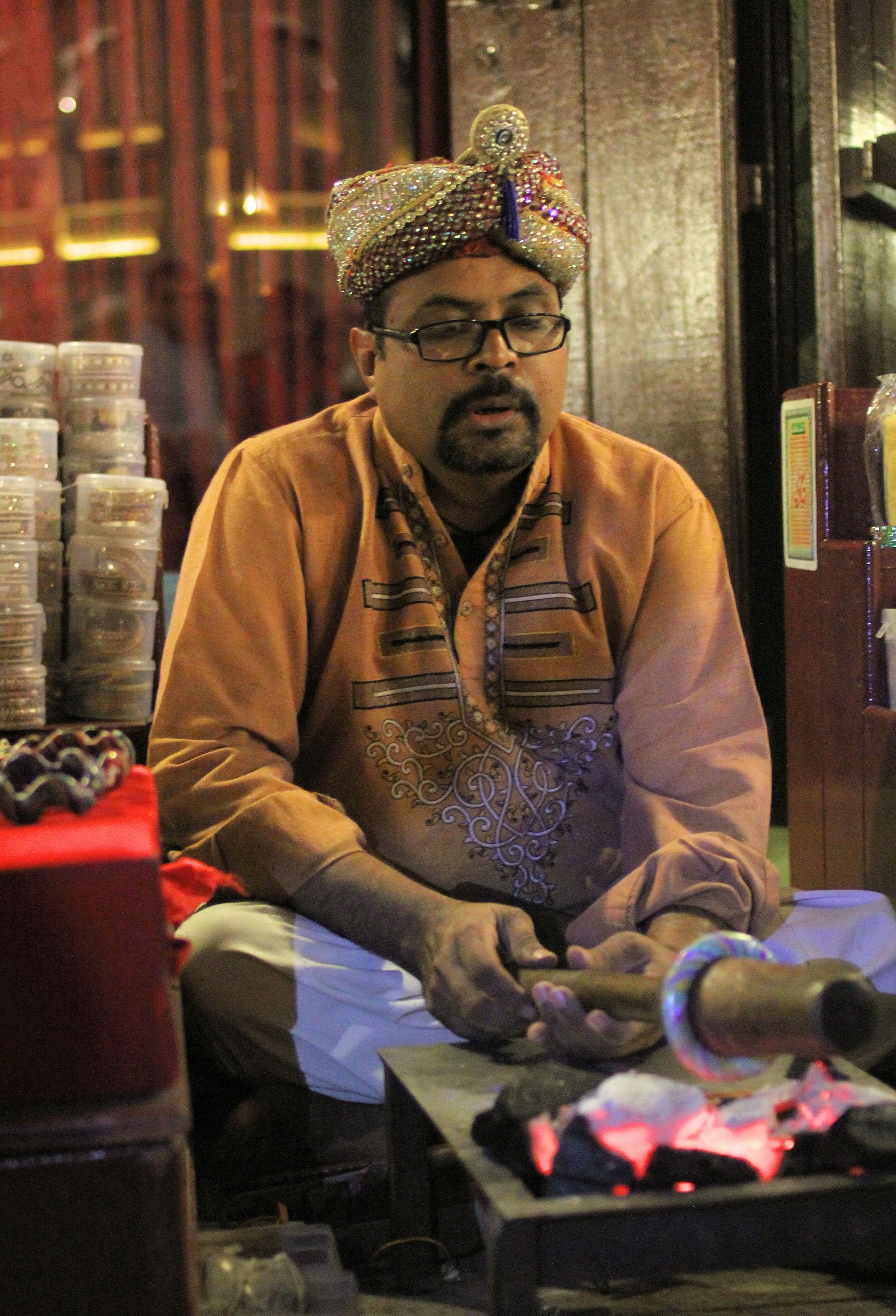
BANGLES AND FALCONS
At Souq Waqif, a market in the heart of the city, I hear bangle-maker Mohammed Aslam before I see him.
"Come on women, come on men, wear my bracelets, become happy," he croons from his street stall outside the Royal Tandoor restaurant, as a curious crowd gathers.
Crouched over a heap of glowing charcoal, he repeats the self-composed ditty as he shapes lac bangles in the fire, moulding jewel-toned stripes that glimmer in the heat.
Lac is made of resin secreted by tiny insects.
Mr Aslam, who is from Jaipur in India, was invited to work in Doha by a managing director of the parent company that owns Royal Tandoor. His two sons, who also make "tandoori bangles", as he calls them, ply their trade in Mumbai, while he has been in Doha for close to a decade.
Other foreigners, craftsmen of a different form, put brush to paper at the Souq Waqif Art Centre, a narrow alley of artists who paint portraits, nature and cartoons.
One of them, from Kerala, India, sketches as a hobby, but has a full- time job in information technology.
I ask why he came to work in Doha. "The money is better," he says, smiling unabashedly, and it is.
According to the 2014 Gulf Business Salary Survey, Qatar is the second best-paying nation in the Gulf Cooperation Council, a regional political organisation comprising energy-rich Gulf monarchies such as Qatar, Saudi Arabia and the United Arab Emirates.
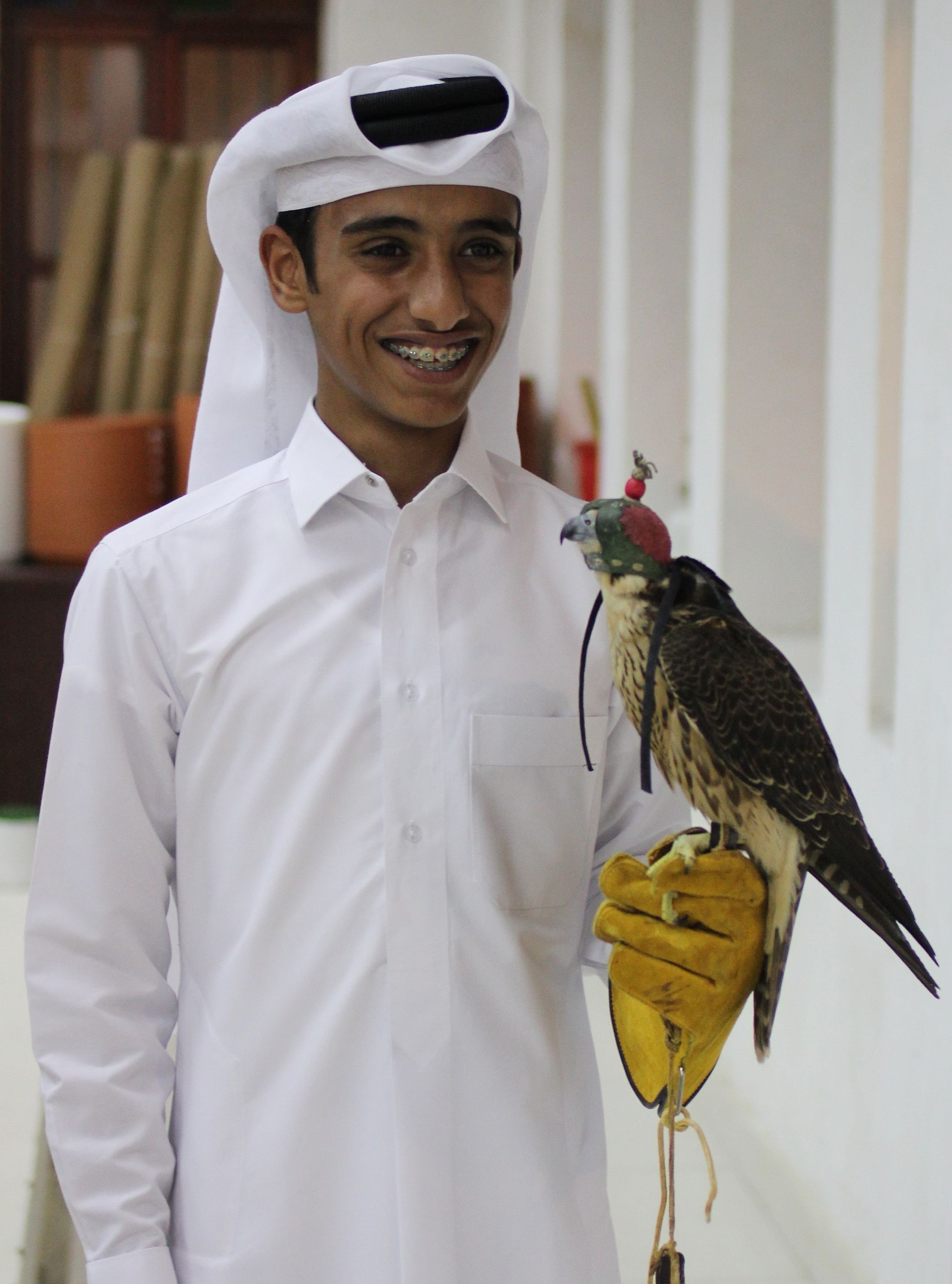
Monthly salaries from 2014 to 2015 averaged 17,144 Qatari riyals (S$6,675) and there is no personal income tax.
But before Qatar struck it rich in the oil fields in the 1930s, fishing and pearl diving were its main sources of income and people traded these wares at Souq Waqif, which means "standing market".
During that time, the encroaching tide kept traders on their feet as they bought and sold their goods.
I learn all this without interacting with any locals.
"In Qatar, it is not so easy to meet a Qatari," says Mr Choudhary as he leads our group of four to the Falcon Hospital, but it is here that we finally interact with some - wealthy ones, at that.
Outside the hospital, boys and men wearing the thowb, or ankle- length white robes accompanied by a white headdress, hold their prized pets aloft.
The birds, which have a keen sense of hearing and vision up to 10 times better than humans, are hooded to protect them from reacting to visual stimuli until they are ready to hunt.
For the falcons, hunting is in their genes. The sport originated in Iran more than 5,000 years ago and was introduced to Qatar by Bedouin tribes living in the desert.
Bedouins, who found the raptors adept at taking down smaller birds such as doves or pigeons, practise it the same way in today's version of the sport.
Treatment at the falcon hospital, where the birds perch in rows awaiting treatment for issues such as digestive trouble or hunting injuries to their feet and wings, is kept affordable - at about 14 to 50 Qatari riyals a visit.
Owning the birds, however, is an expensive hobby. A fully grown falcon can fetch up to 250,000 Qatari riyals.
It is a symbol of pride. A young boy, approximately in his teens, notices our cameras and offers to pose for photos, holding his cherished bird before him and beaming through his braces.
He holds still while we snap away, smiling until we are done. The falcon stays still, unruffled by the crowd. After we lower our cameras, the boy lingers just a bit longer, as though wanting to prolong the attention on his falcon.
DESERT THRILLS
When we head into the Sealine desert for an evening of dune bashing and camel riding, I have more pressing concerns than identifying people's origins. Such as - am I going to be tipped off this camel?
The answer is no, but when the docile animal stands up, there is a brief moment of uncertainty. Then the camel rights itself, its minder gives it a gentle tug and we are off, undulating across the fine, white, crater-like landscape.
As I ride, I think about my visit to Embrace Doha (www.embracedoha.net), where founder and chief executive Amal Al Shamari, a native Qatari, explained aspects of her country's culture.
Men wearing the thowb, for instance, place black rings of thick coiled rope on their heads, which were once used by Bedouins to tether their camels when they bedded down for the night. The rings have, over time, become part of their traditional dress.
The camel ride has no obvious destination and, at 20 Qatari riyals for a five-minute ride, it is clearly meant for tourists.
We walk to a pre-determined point, then return to the start, where about 15 other camels bedecked in colourful blankets are waiting to be ridden and photographed.
But perched atop the camel, high enough to gaze into the horizon where the first rays of the setting sun are colouring the sand dunes a golden hue, it is easy to imagine the Bedouins traversing this same landscape all those years ago.
Later, seated snugly in a 4x4 vehicle, we explore more of the desert, beautiful in its sparseness and sameness no matter which window I look out of.
The ride starts out benign - we climb up a towering dune of silky white sand, so high that I cannot see its apex, and then begin the winding journey down.
We pass mounds and craters that feel almost like a different planet, and plunge down steep drops that look virtually impassable.
About 30 minutes in, our guide and driver Saif Jedrzejowski, from 365 Adventures (365adventures.me), stops the vehicle at the edge of one of these drops.
Beyond us is a body of water, an inland sea also known as Khor Al Adaid.
-
Numbers at a glance
-
94
The percentage of Qatar's workforce that is made up of foreigners$6,675
The monthly average salaries in Qatar from 2014 to 2015$97,340
The price a fully grown falcon can fetch, which works out to about 250,000 Qatari riyals2022
The year Qatar will host the Fifa World Cup
He explains that the sea is formed by encroaching water from the Arabian Gulf and is the only one of its kind in the world.
We pose for photos against pastel skies, our footprints leaving deep impressions in the fine white sand.
Before we leave, I scoop up a handful and let the wind carry it from my fingers, scattering the sand across the desert's shirred surface.
As we pile back into the vehicle and pull away, I can already see the sand being picked up by dusk winds, filling indentations where we stood only moments before.
DOHA BY NIGHT
Doha hits daytime highs of 40 deg C during my October visit, so nightfall is a relief, when the sun recedes and temperatures drop to the high 20s.
Just after sunset, we pile into the double-decker, open-topped Doha Bus (www.dohabus.com; admission: 95 Qatari riyals) for a night tour of the city.
The tour, which starts at Souq Waqif at 7pm, comes with an audio commentary in seven languages.
But I find it more engaging to chat with tour guide Jasmine Domingo, who serves us cups of steaming Karak, or sweet tea, and peppers the 90-minute journey with anecdotes about Qatar.
As we pass the Emiri Diwan, or Presidential Palace, she points out a paddock full of pure-bred Arabian horses, which belong to the Emir or king.
The sleek, photogenic horses, which are housed in ornate white stables opposite the palace, are sometimes ridden by the Emir and his staff.
During their downtime, the horses are tame and friendly. Those leaning out of the paddock's fence are happy to be stroked and photographed.
Approaching the Doha Corniche, a 7km waterfront promenade that overlooks many iconic buildings such as the Museum of Islamic Art (www.mia.org.qa/en) and the Doha Tower, Ms Domingo points out the many Karak stalls that line a walkway leading to the promenade.
"When foreigners in Qatar miss home, we come here, buy a cup of Karak and sit at the promenade," says Ms Domingo, who is from the Philippines and has worked in Qatar for 31/2 years.
Indeed, when we disembark briefly for photos, the promenade is crowded even on a weeknight.
People clamber onto the concrete breakwater, sitting in pairs and groups, looking at the jewelled horizon of their temporary home while reminiscing about the one they will eventually return to.
• Clara Lock is a freelance writer.
Join ST's Telegram channel and get the latest breaking news delivered to you.
A version of this article appeared in the print edition of The Sunday Times on March 12, 2017, with the headline Qatar, home away from home. Subscribe

